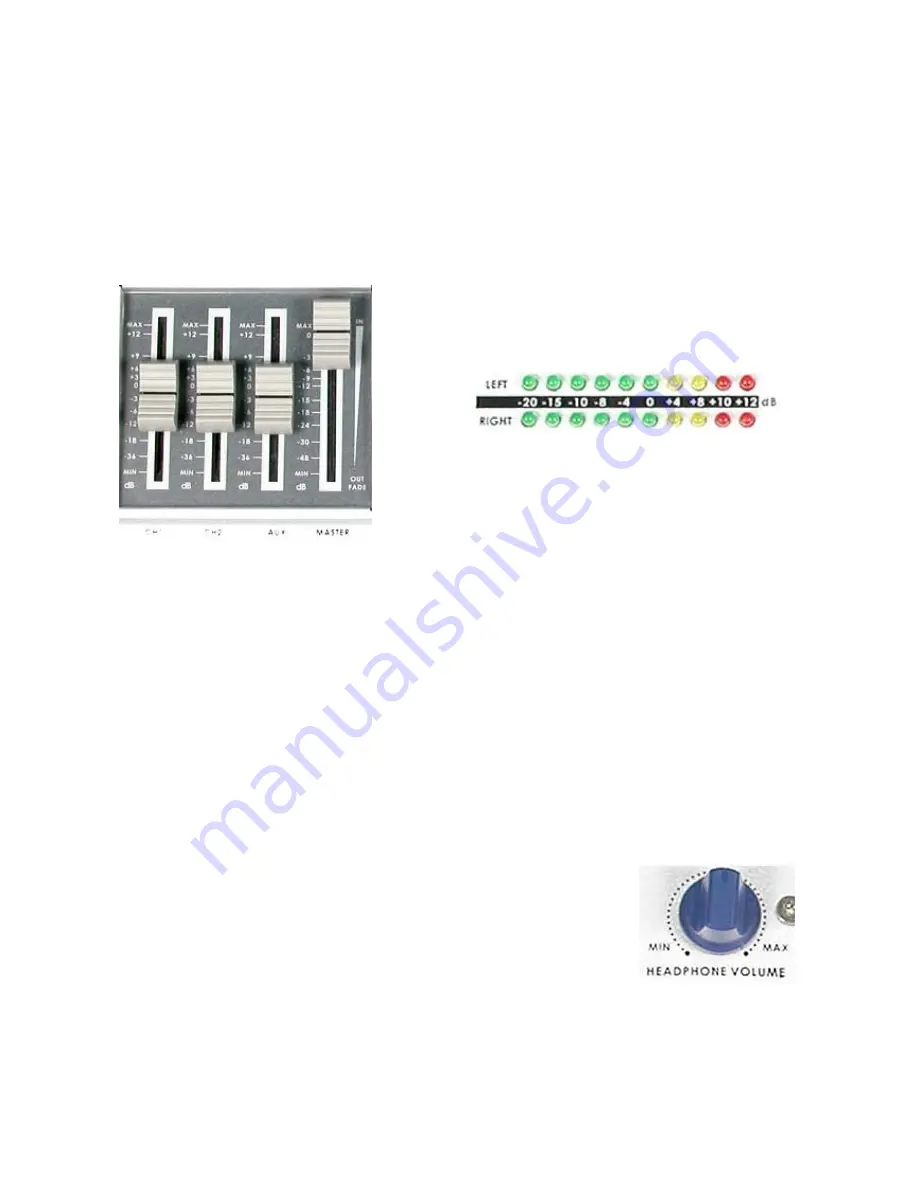
Audio Inputs, Levels, and Meters
(Faders, bus selectors,)
Audio Input Level Calibration Procedure
The first step in setting up the audio for a session with your SE-500 consists of adjusting the levels on which
channel you will be using. Slide the Master fader to
Max, and set the other faders to 0. Then, listening to the
audio and watching the Audio Level Meters (see below), set the level with the fader so that the sound is
consistently at b0 dB (green LED) and +8 dB (yellow LED) and just barely peaks occasionally to
+10 dB (red LED). The idea is to avoid any audible distortion (clipping), caused by making the signal level
too high at this stage.
Three faders on the left represent the input volumes (CH-1, CH-2, AUX), which determine what signals are
present at the Main Output. If any of the faders are all the way down, there will be no audio from that input
channel heard at the output.
These faders correspond with each input and control the relative volume of each input in the master output
as well as the master output level. When the faders are set to 0, they pass the audio signal through at the
same level it was at when it entered this bus. You can increase or decrease the volume of each channel by
moving the fader up or down.
These meters show the audio signal level at the Main output. The strength of any audio signal that is routed
to the output will be displayed here. As mentioned above, these meters play a vital part in correctly setting
the audio levels to avoid clipping or other distortion. You’ll notice that the LEDs are green up through the +0
dB level, turn yellow at +4 dB, and turn red at +10 dB. As you set the audio level for each input, make sure
that the signal peaks to +8 dB or very occasionally to +10 dB. Every time the signal goes to +12 dB, it will be
distorted.
Use the Headphone section to accurately monitor with the “Master” volume
output. In many cases, headphones may be a more useful and accurate choice
than speakers for audio monitoring. For example, in a noisy club or at a concert,
you won’t be able to hear any additional sound coming through speakers.
Headphones will also more accurately reproduce the sound you wish to monitor
at a lower cost than speakers.
23






























